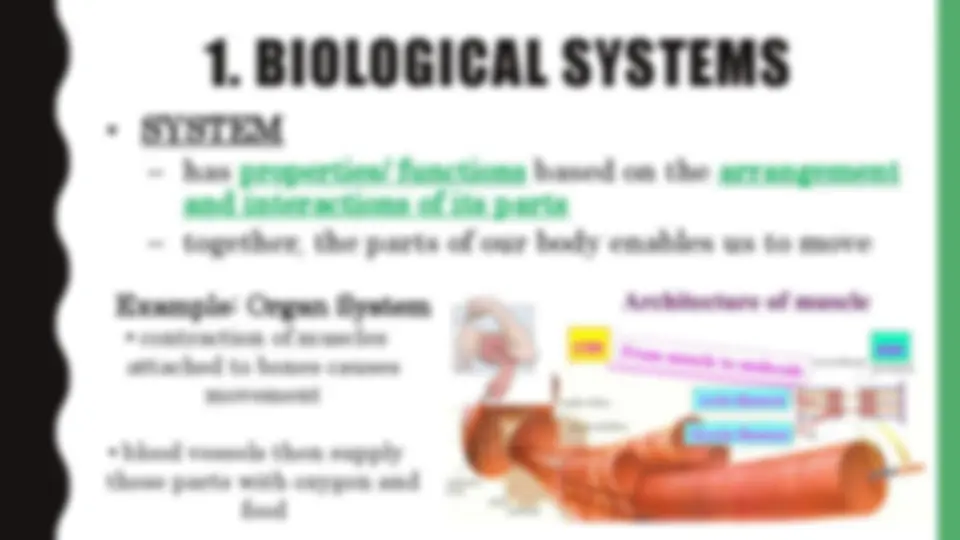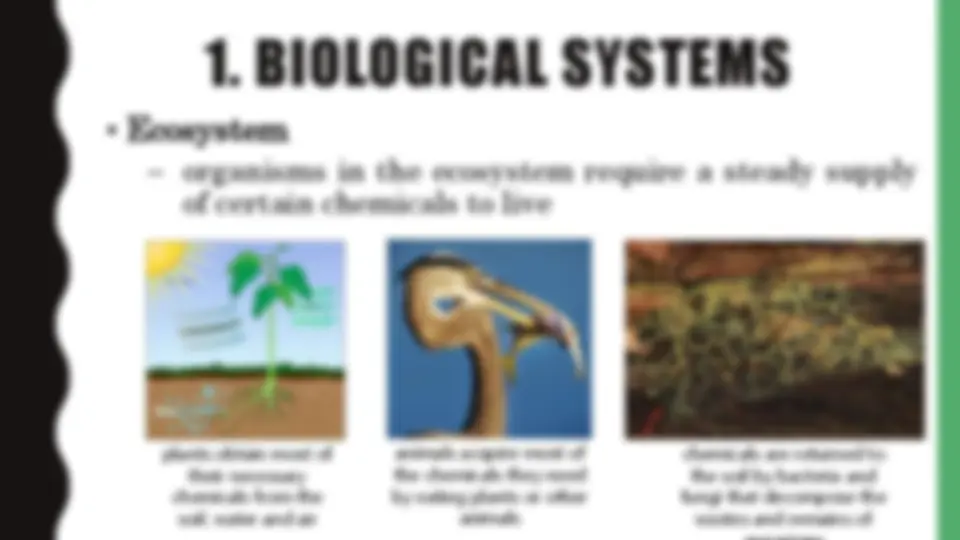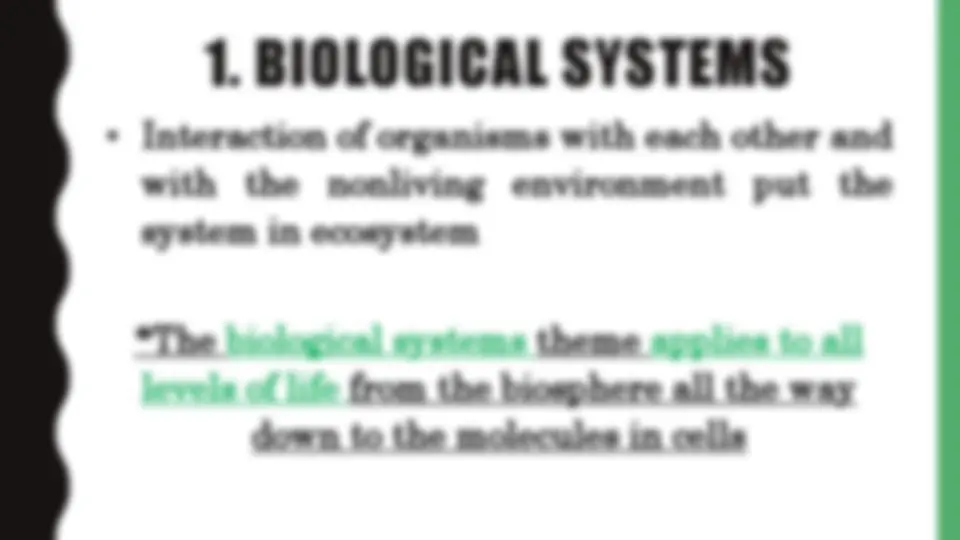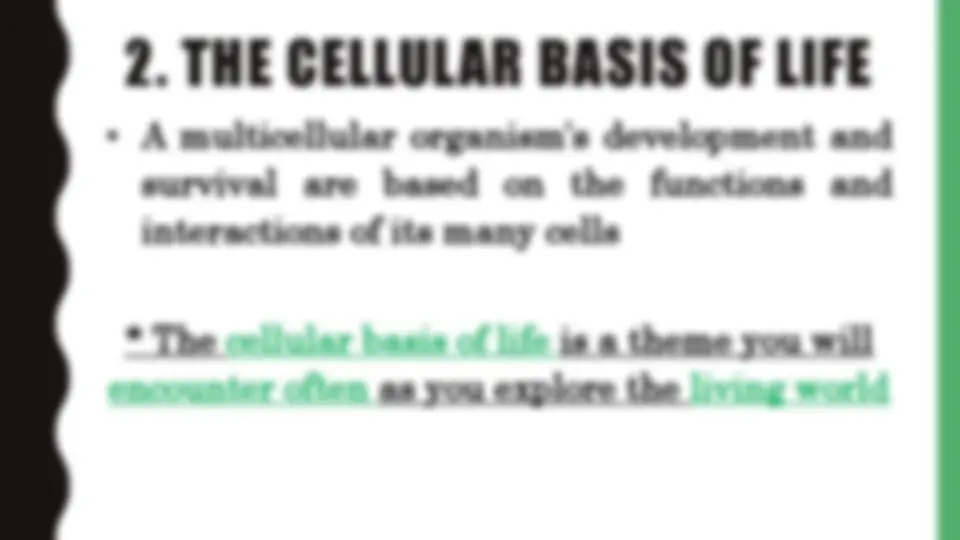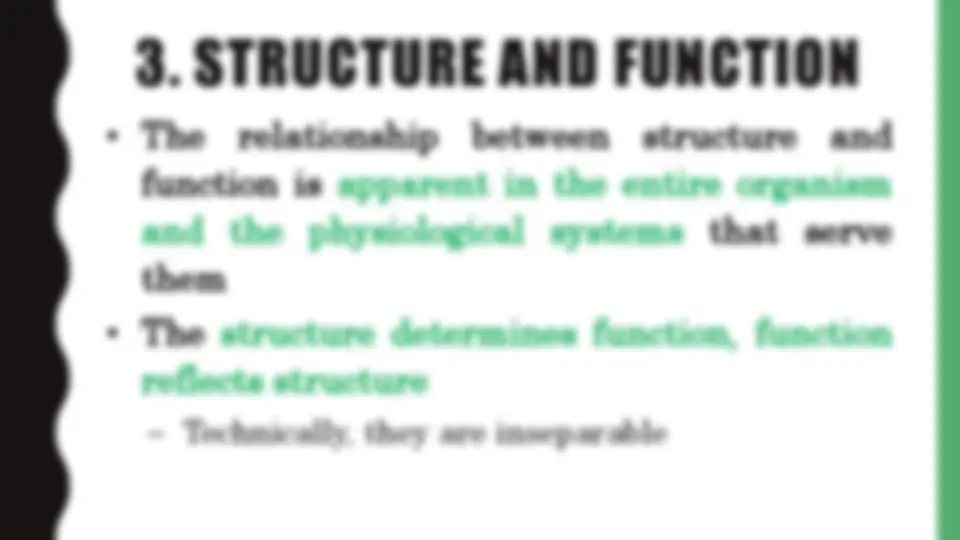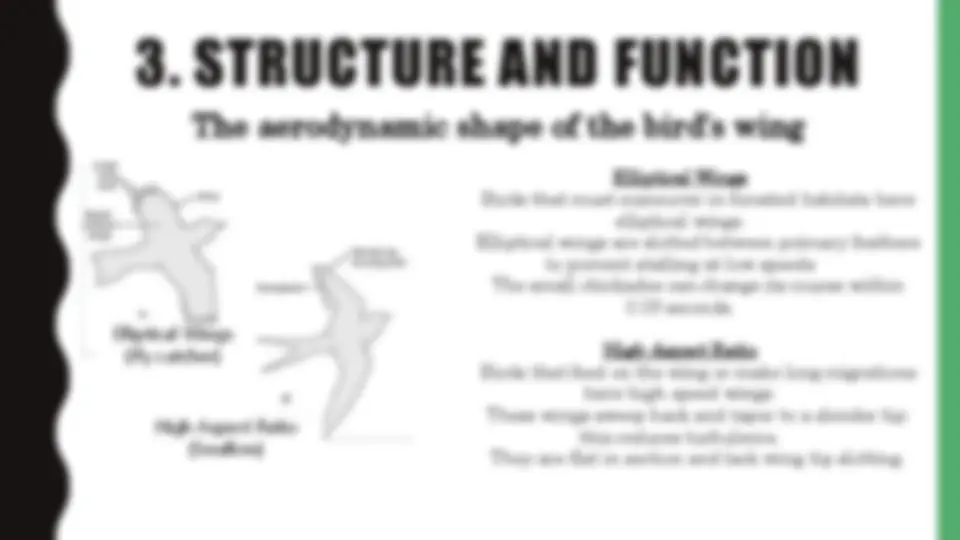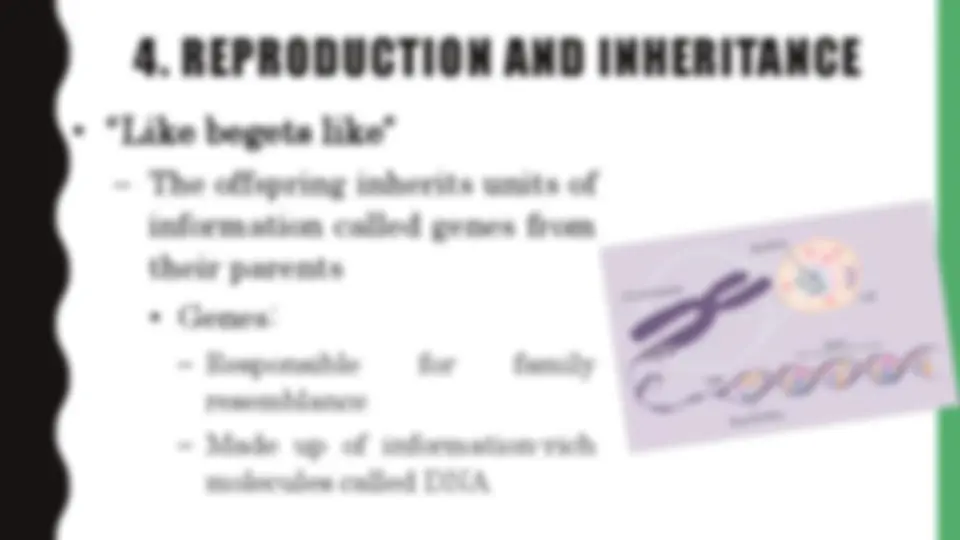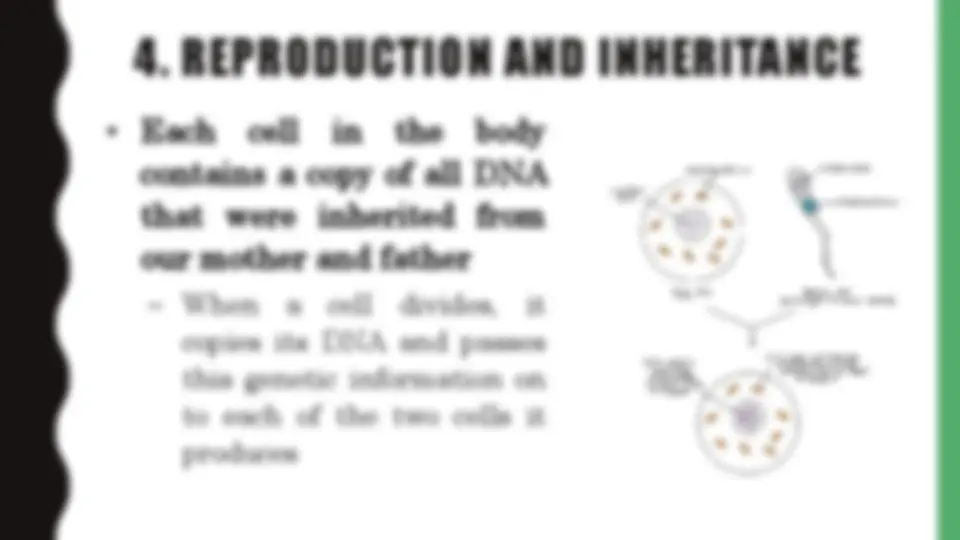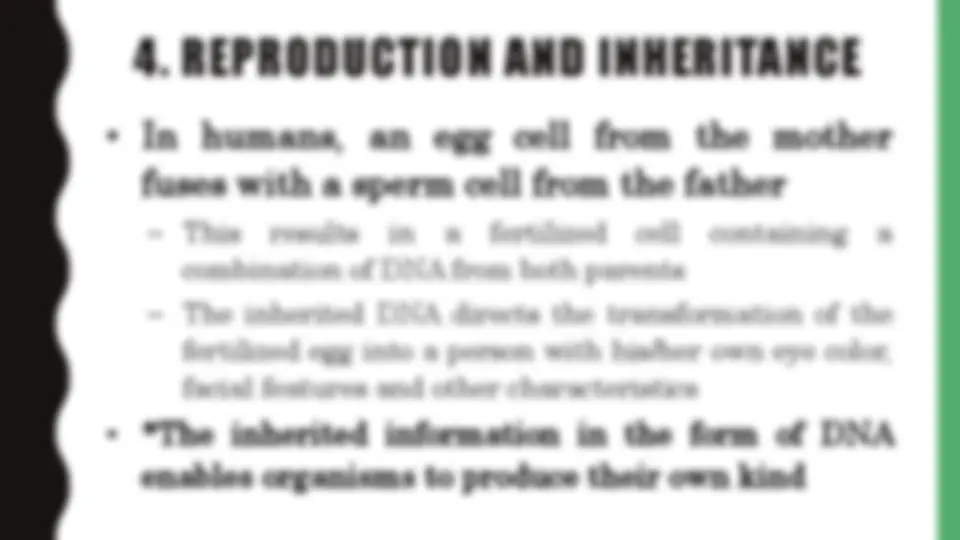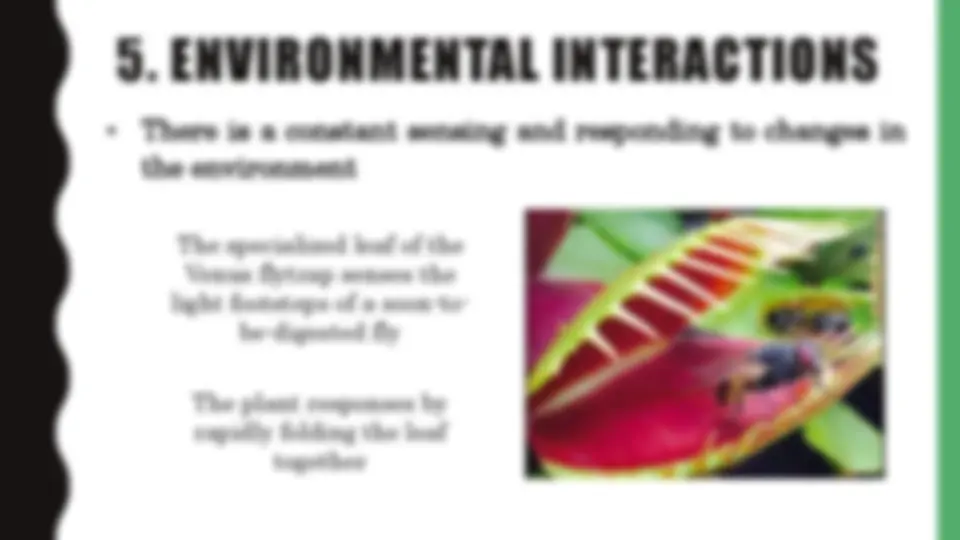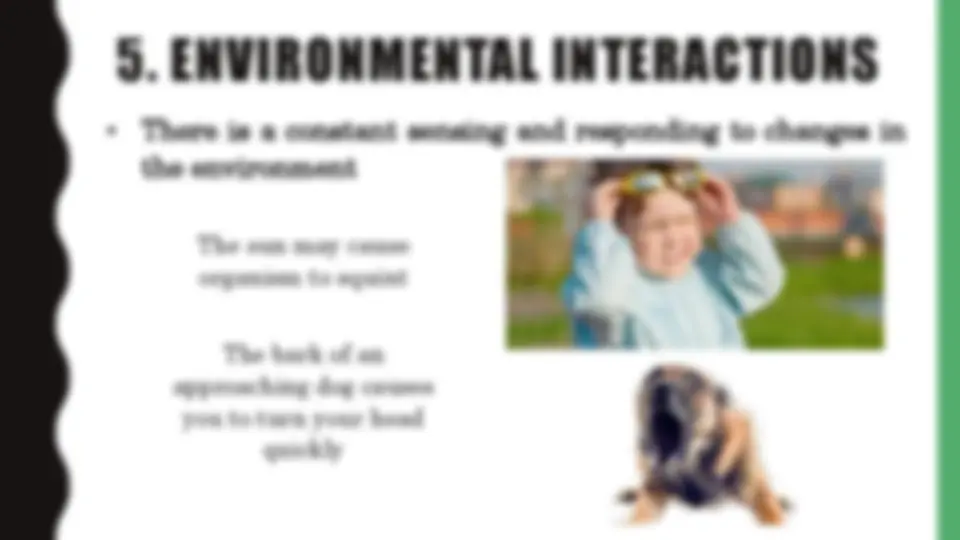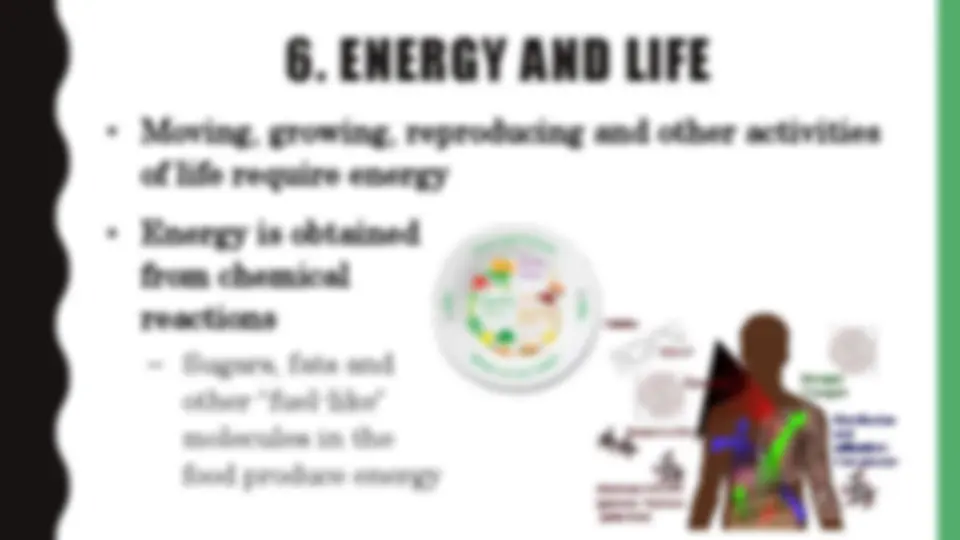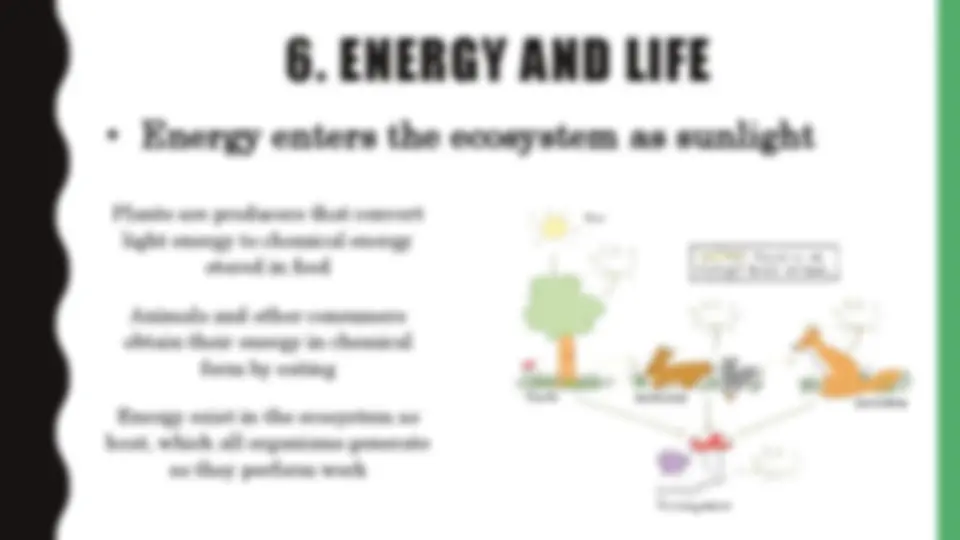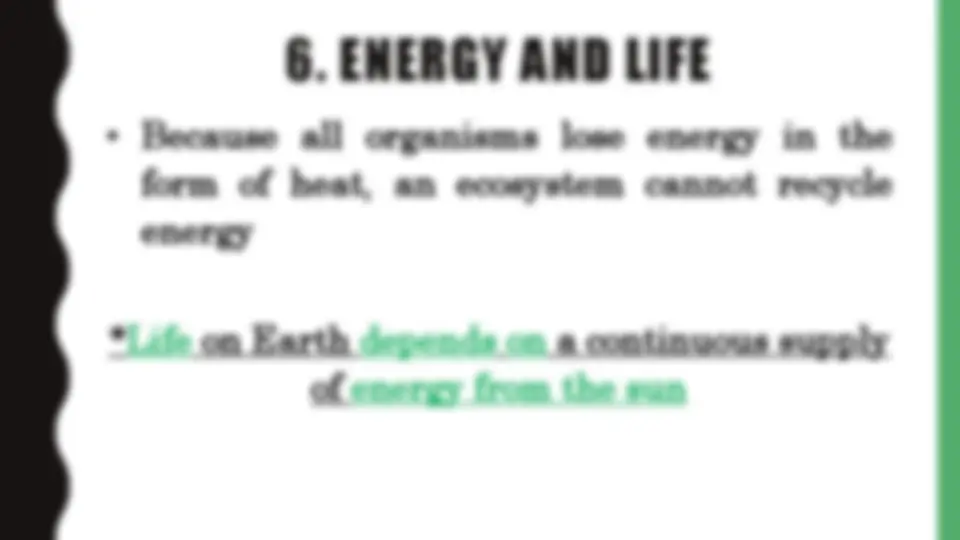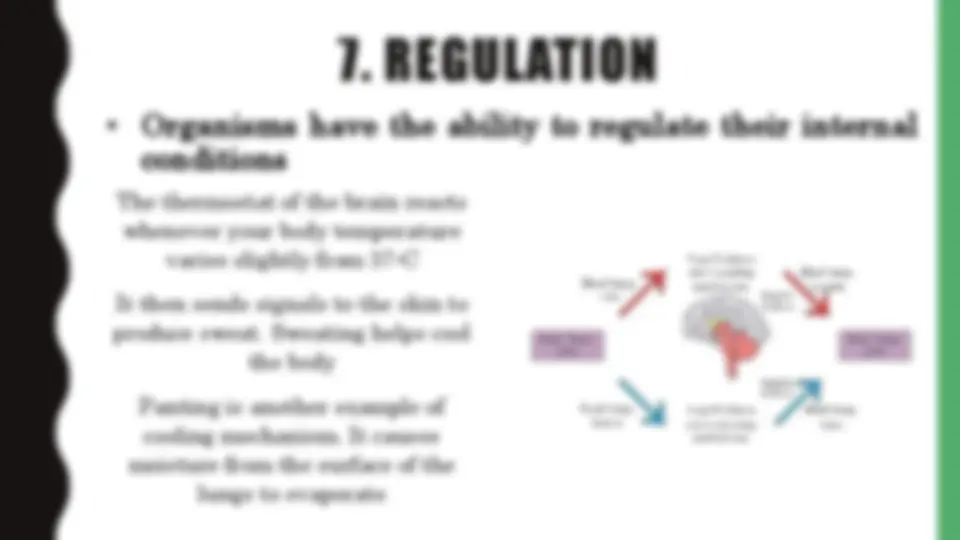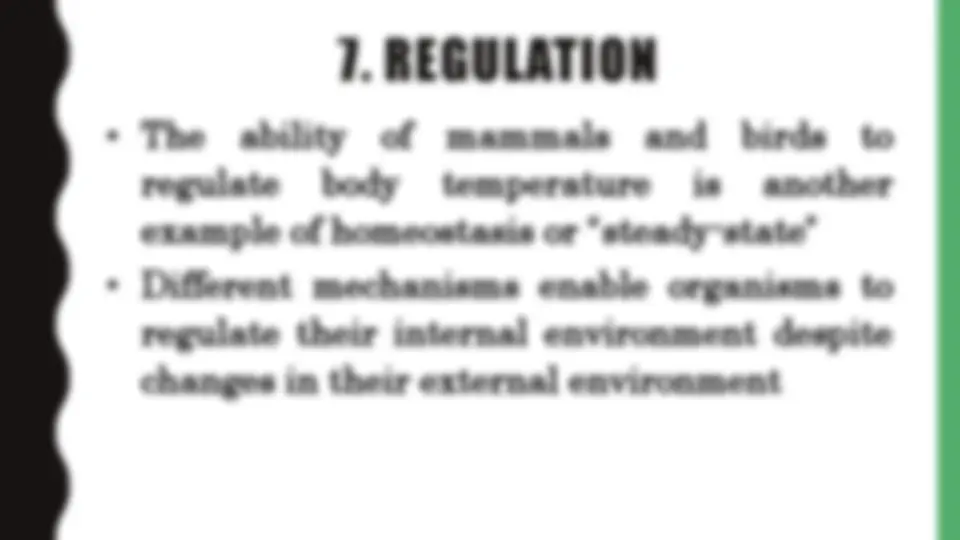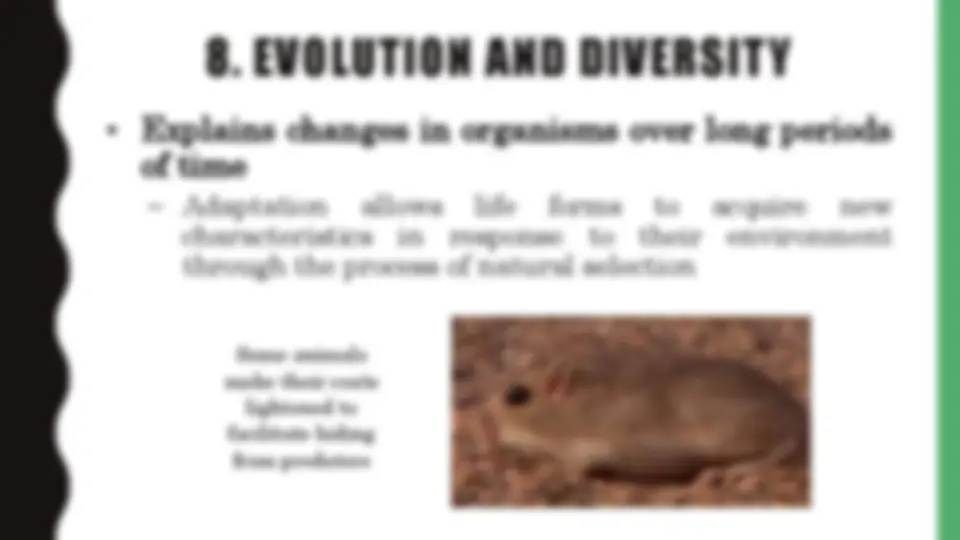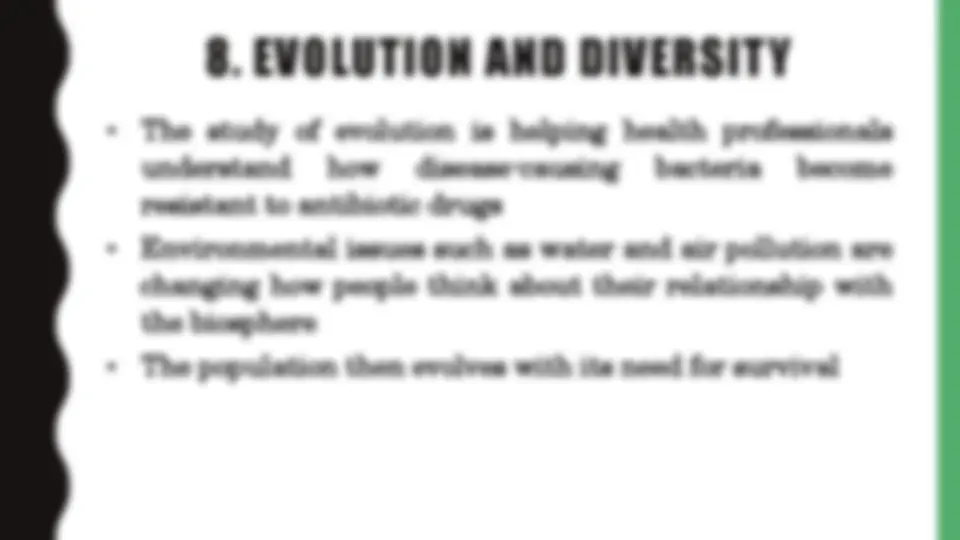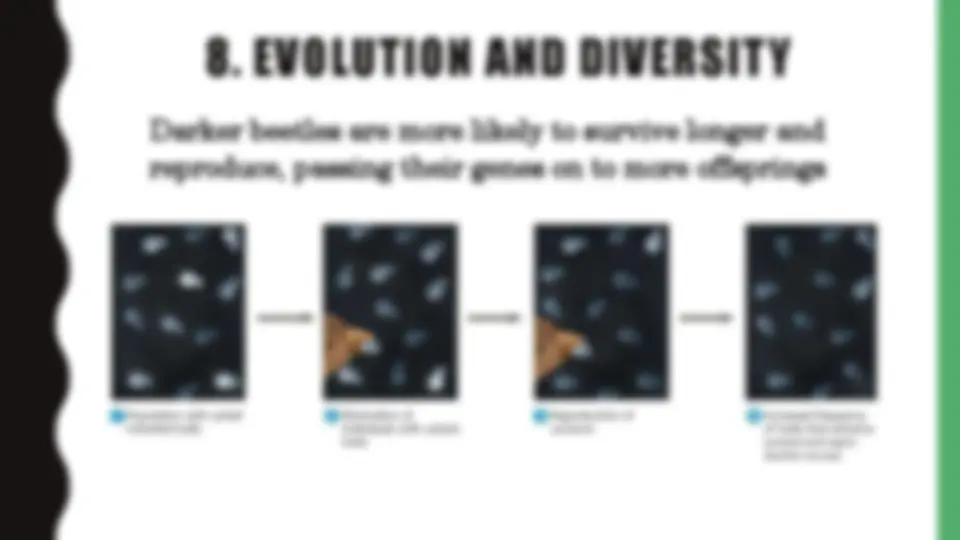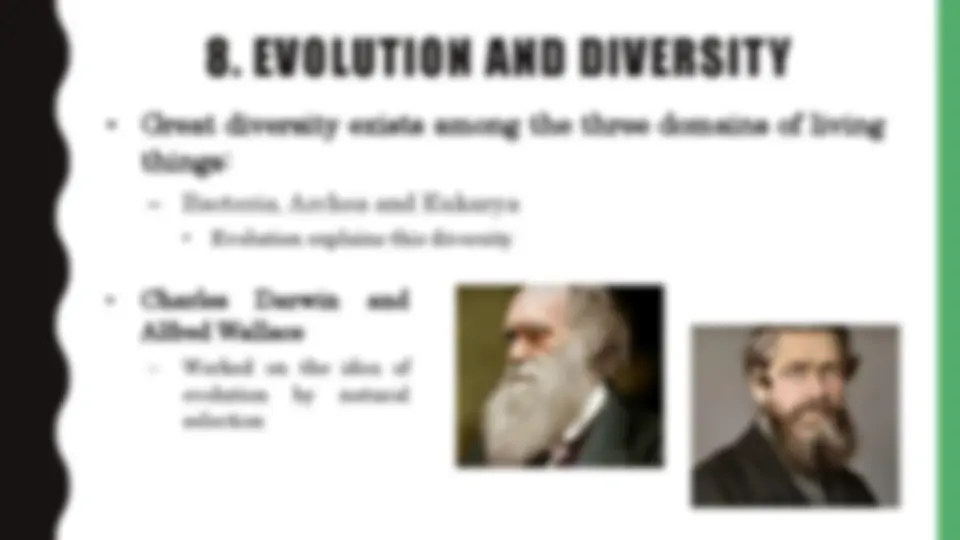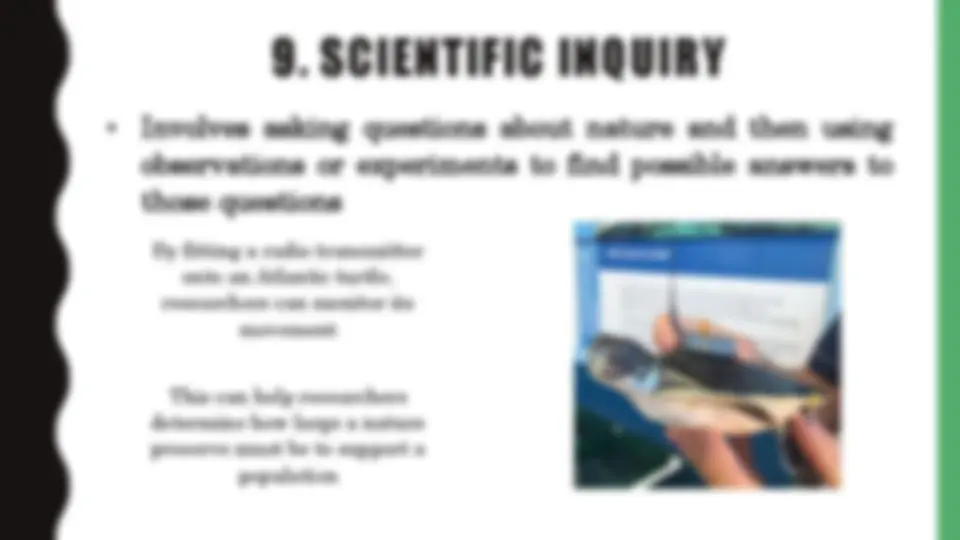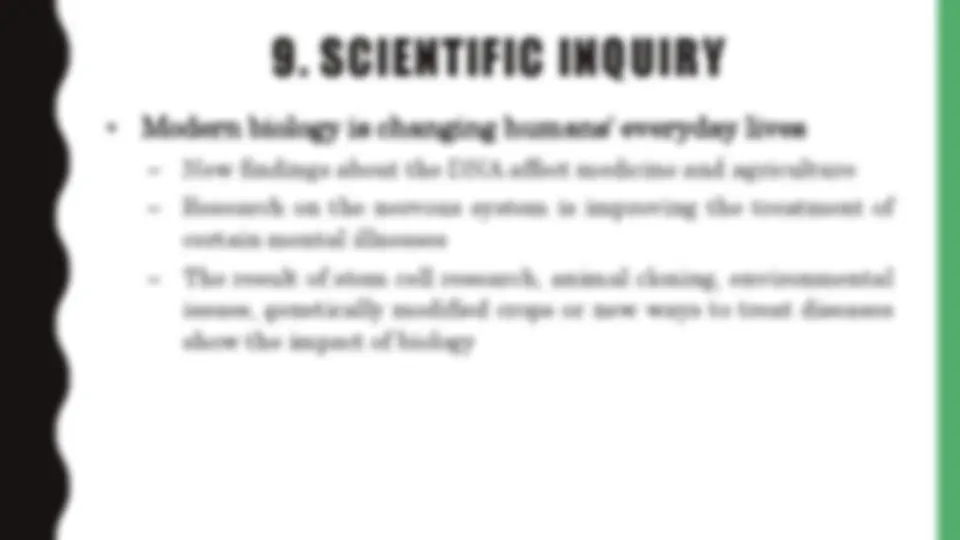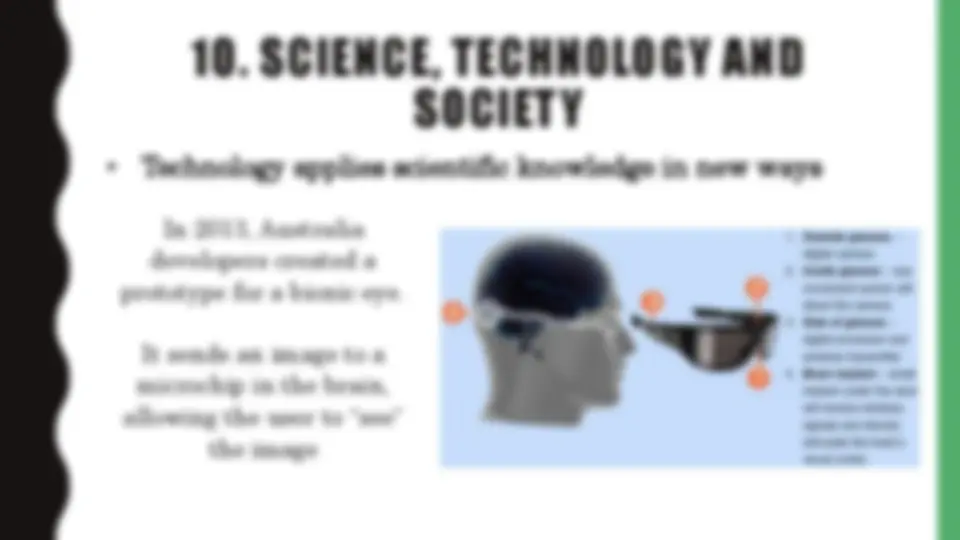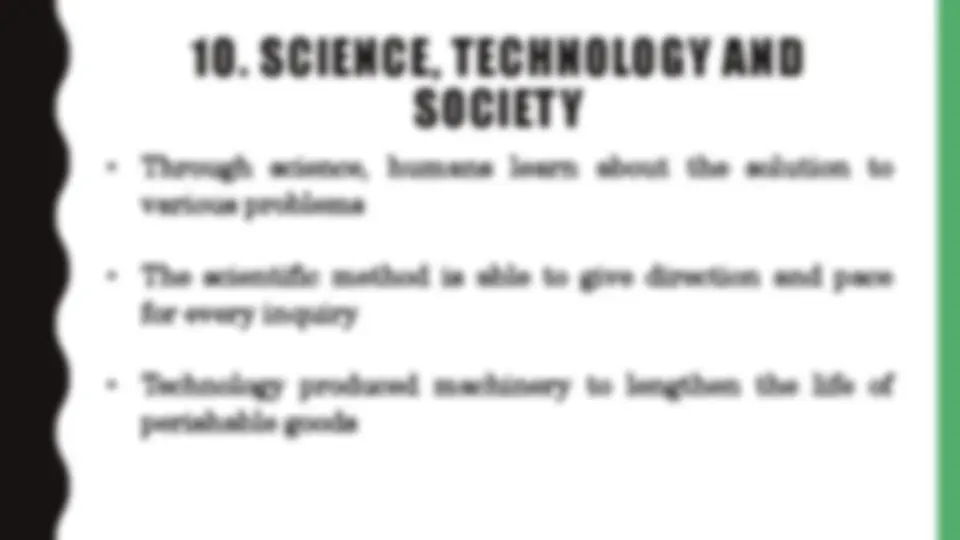Download interesting and educational and more Lecture notes Science education in PDF only on Docsity!
UNIFYING
THEMES OF LIFE
THEMES OF LIFE
- basic ideas that apply to all
organisms
the exploration of life
1. BIOLOGICAL SYSTEMS
- Ecosystem
- organisms in the ecosystem require a steady supply of certain chemicals to live chemicals are returned to the soil by bacteria and fungi that decompose the wastes and remains of animals acquire most of the chemicals they need by eating plants or other animals plants obtain most of their necessary chemicals from the soil, water and air
1. BIOLOGICAL SYSTEMS
- Interaction of organisms with each other and with the nonliving environment put the system in ecosystem *The biological systems theme applies to all levels of life from the biosphere all the way down to the molecules in cells
2. THE CELLULAR BASIS OF LIFE
- Most multicellular organisms have cells that are specialized for different functions Muscle cells Contract and enable us to move Nerve cells Transmit impulses that control our muscles
2. THE CELLULAR BASIS OF LIFE
- A multicellular organism’s development and survival are based on the functions and interactions of its many cells
- The cellular basis of life is a theme you will encounter often as you explore the living world
3. STRUCTURE AND FUNCTION
The aerodynamic shape of the bird’s wing Elliptical Wings Birds that must maneuver in forested habitats have elliptical wings. Elliptical wings are slotted between primary feathers to prevent stalling at low speeds The small chickadee can change its course within 0.03 seconds. High-Aspect Ratio Birds that feed on the wing or make long migrations have high-speed wings. These wings sweep back and taper to a slender tip; this reduces turbulence. They are flat in section and lack wing-tip slotting. Elliptical Wings (Fly catcher) High Aspect Ratio (Swallow)
3. STRUCTURE AND FUNCTION
The aerodynamic shape of the bird’s wing Dynamic Soaring wings Albatrosses, gannets and other oceanic soaring birds have long, narrow wings. They have the highest aerodynamic efficiency of any design, but are less maneuverable. These birds exploit the highly reliable sea winds and air currents of different velocities. High-Lift Wings Vultures, hawks, eagles, owls and other birds of prey that carry heavy loads have wings with slotting, alulas and pronounced camber. This produces high lift at slow speed. Wings of these birds have an aspect ratio intermediate between elliptical wings and high aspect ratio wings. Many are land soarers; broad, slotted wings allow sensitive response for static Dynamic Soaring Wings (Albatross) High- Lift Wings (Hawk)
4. REPRODUCTION AND INHERITANCE
- “Like begets like”
- The offspring inherits units of information called genes from their parents
- Genes:
- Responsible for family resemblance
- Made up of information-rich molecules called DNA
4. REPRODUCTION AND INHERITANCE
- Each cell in the body contains a copy of all DNA that were inherited from our mother and father - When a cell divides, it copies its DNA and passes this genetic information on to each of the two cells it produces
- ENVIRONMENTAL INTERACTIONS
- No organism is completely isolated from its surroundings
- As part of an ecosystem, each organism interacts continuously with its environment
- The plants obtain water and nutrients from the soil, carbon dioxide from the air and energy from sunlight
- ENVIRONMENTAL INTERACTIONS
- The transfer of chemicals between organisms and their environments is a key process in any ecosystem
- Breathing air, drinking water, eating food and getting rid of wastes are chemical exchanges with the environment
- ENVIRONMENTAL INTERACTIONS
- There is a constant sensing and responding to changes in the environment The sun may cause organism to squint The bark of an approaching dog causes you to turn your head quickly
- ENERGY AND LIFE
- Moving, growing, reproducing and other activities of life require energy
- Energy is obtained from chemical reactions
- Sugars, fats and other “fuel-like” molecules in the food produce energy

